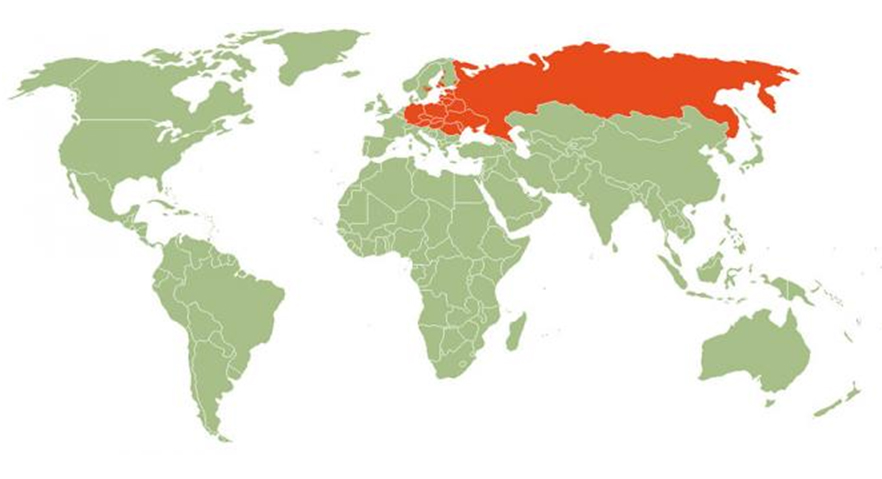Tick Borne Encephalitis
Tick-borne encephalitis (TBE) is a flavivirus infection that affects the central nervous system and is transmitted by tick bites.
 Transmission
Transmission
TBE is transmitted to humans via:
The bite of an infected tick; Ixodes ricinus and I. persulactus are the main vector species
- All tick life cycle stages, larvae, nymphs and adults, may be infected and transmit infection. They remain infected for life and transmit infection to other ticks via their eggs and via co-feeding.
- Ticks act as both vectors and reservoirs of infection.
- TBEV is present in tick saliva and is transmitted within minutes of the tick bite – early removal of the tick does not prevent infection.
ingestion of unpasteurised milk/milk products from infected animals, especially goats - less common. In Europe transmission occurs mainly between April and November in forested/rural areas
TBE is zoonotic; wild vertebrates, particularly rodents, are the main hosts of TBE virus (TBEV) and maintain a reservoir of infection from which ticks act as vectors to humans.
 Vaccine Schedule
Vaccine Schedule
Tick Borne Encephalitis
| Age | Conventional Schedule | Rapid Schedule | Booster |
|---|---|---|---|
| 16 years + | 3 doses on Day 0, 1-3 months, 5-12 months | 3 doses on Day 0, 14, 5-12 months | 3-5 years |
Tick borne Encephalitis Paediatric
| Age | Conventional Schedule | Rapid Schedule | Booster |
|---|---|---|---|
| 1 -15 years | 3 doses on Day 0, 1-3 months, 5-12 months | 3 doses on Day 0, 14, 5-12 months | 3-5 years |
 Epidemiology and Risk Areas
Epidemiology and Risk Areas
TBE exists in endemic foci in eastern, central and northern Europe, northern China, Mongolia, Russia, Japan and South Korea. Other sporadic foci are found. Most clinical cases are reported from the Baltic region, Slovenia and Russian Federation.
In endemic areas in Europe, 0.5 – 5% of ticks are infected with TBEV. 3 main subtypes of TBEV vary in geographical location:
- Western European – central, eastern and northern Europe to Russia
- Siberian - Urals, Siberia, far-Eastern Russia, Finland
- Far Eastern - far-Eastern Russia, China and Japan.
- Around 10–12 000 cases are reported annually in endemic areas but this is thought to be an under-estimate.

 Clinical Aspects
Clinical Aspects
Infection is asymptomatic in approximately 66% of cases.
Symptomatic infection presents as an acute febrile illness with neurological signs.,
- Incubation - 2-28 days (most commonly 7-14 days) post tick bite; it is often shorter if transmitted through contaminated dairy produce.
- Mortality rate ~1 % in Europe, but higher in Far East and Siberia.
- Convalescence - in 26 – 46% of those with severe disease due to the European subtype, chronic neuropsychiatric or neurological sequelae are observed.
 Risk of severe illness
Risk of severe illness
- Higher mortality rates with Siberian and Far Eastern subtypes (2-3% and 20-40%) compared to European virus (1-2%).
- Increased morbidity with increasing age.
 Signs and Symptoms
Signs and Symptoms
Varies with infecting subtype of TBEV.
Western:
Biphasic illness.
- First, viraemic phase
- Initial flu-like illness 2 - 7 days.
- Asymptomatic period 2 –10 days
- Second phase in 20-30%:
- Virus spreads to the central nervous system causing:
- Sudden onset high fever, headache, signs of CNS inflammation presenting as meningitis, meninogencephalitis, neuropsychiatric presentations including cognitive impairment/behavioural change or myelitis.
Siberian/Far Eastern:
- Monophasic illness.
- ~ 80% cases no neurological involvement.
- 20% severe meningoencephalitis.
- Chronic forms in 1-2%, either long term neurological/neuropsychiatric sequelae or persistent epilepsy.
Bristol
Bristol
BS6 6LD